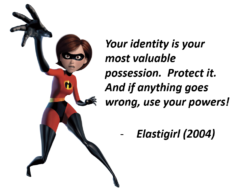OSIS conducted the third in our series of User-Centric Identity Interop events last week at the Burton Group Catalyst conference in Barcelona.
As in San Francisco, the Burton Group hosted and provided support for the event, and in this posting, analyst and cat herder Bob Blakley reports on what was accomplished:
There were a few differences between the Barcelona interop and the earlier event held at Catalyst North America 2007. The most noticeable difference is that the Barcelona interop has been conducted entirely in public. You can visit the Interop wiki to see details of the organization, planning, use cases, and participants; if you’re in a hurry, though, I’ll summarize here.
Fourteen projects and organizations participated; you can see the list here.
The participants tested 6 identity selectors, 13 identity providers, and 24 relying parties. The Barcelona interop added a significant amount of testing of OpenID interoperability; 6 OpenID providers and 5 OpenID relying parties participated.
The participants have posted their results on the wiki, and a few words are in order about these results. The first thing you’ll notice is that there are a significant number of “failure†and “issue†results. This is very good news for two reasons.
The first reason it’s good news is that it means enough new test cases were designed for this interop to uncover new problems. What you don’t see in the matrix is that when testing began, there were even more failures – which means that a lot of the new issues identified during the exercise have already been fixed.
The second reason the “failure†and “issue†results are good news is that they’re outnumbered by the successes. When you consider that the things tested in Barcelona were all identified as problems at the previous interop, you’ll get an idea of how much work has been done by the OSIS community in only 4 months to improve interoperability and agree on standards of component behavior.
I’d like to call your attention to one more thing. At the Catalyst North America interop in San Francisco, all the interop participants were onsite, sitting in a room together.
Here in Barcelona, as you can see in the Participant Profile table, about half the participants worked remotely. What this means in practical terms is that a lot of the components in this interop were accessed over the Internet, in the same configuration you’d use if you deployed them in your business.
I expect that the results table will continue to evolve for a while as additional information from the event is digested and entered into the wiki; I’ll probably post another blog entry with some analysis of the significance of the results after the conference is over and I’ve gotten some sleep. But my preliminary sense is that this interop continued to demonstrate progress toward an open, deployable, interoperable identity metasystem. Continue reading OSIS User-Centric Identity Interop at Catalyst Europe


